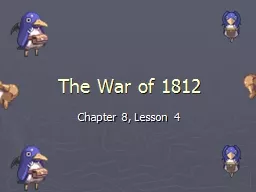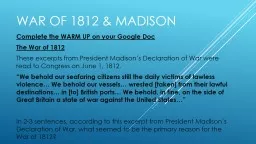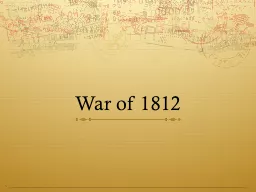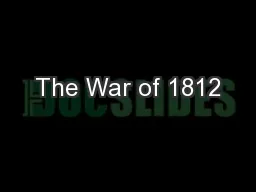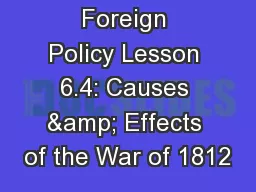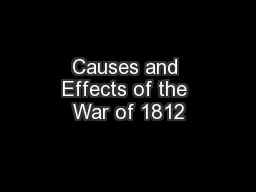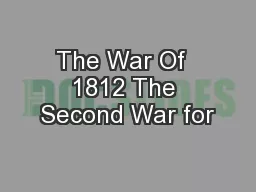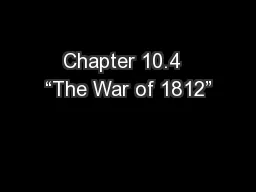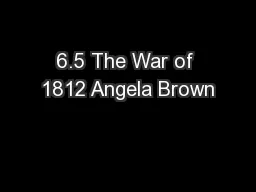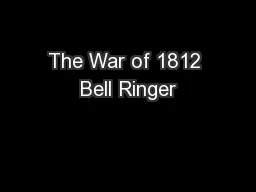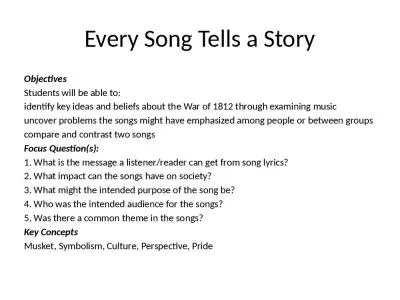PPT-The War of 1812
Author : celsa-spraggs | Published Date : 2016-04-01
Chapter 8 Lesson 4 War Begins Though the War Hawks bragged that they did would win the war they actually were not as prepared as they thought The regular army
Presentation Embed Code
Download Presentation
Download Presentation The PPT/PDF document "The War of 1812" is the property of its rightful owner. Permission is granted to download and print the materials on this website for personal, non-commercial use only, and to display it on your personal computer provided you do not modify the materials and that you retain all copyright notices contained in the materials. By downloading content from our website, you accept the terms of this agreement.
The War of 1812: Transcript
Download Rules Of Document
"The War of 1812"The content belongs to its owner. You may download and print it for personal use, without modification, and keep all copyright notices. By downloading, you agree to these terms.
Related Documents

